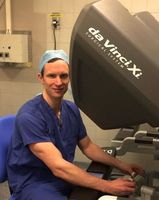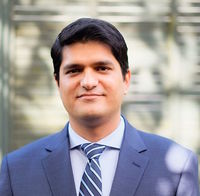Central Auckland, East Auckland, South Auckland, West Auckland, North Auckland > Private Hospitals & Specialists > MercyAscot >
MercyAscot Urological Surgery
Private Surgical Service, Urology
Consultants
Note: Please note below that some people are not available at all locations.
-

Mr Tony Beaven
Urological Surgeon
Available at all locations.
-

Dr Vincent Chan
Urological Surgeon
Available at all locations.
-

Mr Jason Du
Urological Surgeon
Available at all locations.
-

Dr Eva Fong
Urological Surgeon
Available at Mercy Hospital, 98 Mountain Road, Epsom, Auckland
-

Mr Chris Hawke
Urological and Robotic Surgeon
Available at Ascot Hospital, 90 Green Lane East, Remuera, Auckland
-

Mr Madhu Koya
Urological Surgeon
Available at Mercy Hospital, 98 Mountain Road, Epsom, Auckland
-

Dr Anna Lawrence
Urological Surgeon
Available at Ascot Hospital, 90 Green Lane East, Remuera, Auckland
-

Mr Mischel Neill
Urological Surgeon
Available at Ascot Hospital, 90 Green Lane East, Remuera, Auckland
-

Mr Morgan Pokorny
Urological Surgeon
Available at all locations.
-

Mr John Tuckey
Urological Surgeon
Available at Ascot Hospital, 90 Green Lane East, Remuera, Auckland
-

Mr Simon van Rij
Urological and Robotic Surgeon
Available at Ascot Hospital, 90 Green Lane East, Remuera, Auckland
-

Dr Andrew Williams
Urological Surgeon
Available at Mercy Hospital, 98 Mountain Road, Epsom, Auckland
-

Associate Professor Kamran Zargar
Urological Surgeon
Available at Mercy Hospital, 98 Mountain Road, Epsom, Auckland
Procedures / Treatments
The foreskin is pulled away from the body of the penis and cut off, exposing the underlying head of the penis (glans). Stitches may be required to keep the remaining edges of the foreskin in place.
The foreskin is pulled away from the body of the penis and cut off, exposing the underlying head of the penis (glans). Stitches may be required to keep the remaining edges of the foreskin in place.
Incisions (cuts) are made in the abdomen (stomach) to allow access to the bladder. Tissue lying next to the bladder is attached to a solid structure within the pelvis, allowing the bladder neck to be supported, thus correcting urine leakage.
Incisions (cuts) are made in the abdomen (stomach) to allow access to the bladder. Tissue lying next to the bladder is attached to a solid structure within the pelvis, allowing the bladder neck to be supported, thus correcting urine leakage.
A long, thin tube with a tiny camera attached (cystoscope) is inserted into the urinary opening and through the urethra (the tube that carries urine from your bladder to the outside of your body) to your bladder. This allows the urologist to view any abnormalities in your lower urinary tract and, if necessary, take a small tissue sample to look at under the microscope (biopsy).
A long, thin tube with a tiny camera attached (cystoscope) is inserted into the urinary opening and through the urethra (the tube that carries urine from your bladder to the outside of your body) to your bladder. This allows the urologist to view any abnormalities in your lower urinary tract and, if necessary, take a small tissue sample to look at under the microscope (biopsy).
Incisions (cuts) are made in the side of the body, between the ribs and hip, to allow removal of one or both kidneys.
Incisions (cuts) are made in the side of the body, between the ribs and hip, to allow removal of one or both kidneys.
A tube is inserted into the kidney to allow urine to drain out. The tube may drain into a bag on the outside of your body (on your back) or may drain inside your body into the bladder.
A tube is inserted into the kidney to allow urine to drain out. The tube may drain into a bag on the outside of your body (on your back) or may drain inside your body into the bladder.
A small incision (cut) is made in the groin on the side of the undescended testicle and the testicle pulled down into the scrotum. Sometimes a small cut will need to be made in the scrotum as well.
A small incision (cut) is made in the groin on the side of the undescended testicle and the testicle pulled down into the scrotum. Sometimes a small cut will need to be made in the scrotum as well.
Scrotal: a small incision (cut) is made in the front of the scrotum and the testicles removed. This greatly reduces the amount of testosterone produced in the body. Inguinal: an incision is made in the groin to remove a testicle that: is undescended from childhood, has wasted away (atrophied), or has a tumour.
Scrotal: a small incision (cut) is made in the front of the scrotum and the testicles removed. This greatly reduces the amount of testosterone produced in the body. Inguinal: an incision is made in the groin to remove a testicle that: is undescended from childhood, has wasted away (atrophied), or has a tumour.
A thin wire is inserted into your lower back and guided using x-ray imaging to your kidney. A small incision (cut) is then made on your back and a narrow tube is inserted and follows the guide wire to the kidney. The kidney stone(s) is then removed or broken up.
A thin wire is inserted into your lower back and guided using x-ray imaging to your kidney. A small incision (cut) is then made on your back and a narrow tube is inserted and follows the guide wire to the kidney. The kidney stone(s) is then removed or broken up.
Incisions (cuts) are made in either the lower abdomen (stomach) or between the scrotum and the anus to allow removal of the enlarged parts of, or the entire, prostate gland.
Incisions (cuts) are made in either the lower abdomen (stomach) or between the scrotum and the anus to allow removal of the enlarged parts of, or the entire, prostate gland.
Small incisions (cuts) are made in the lower abdomen (stomach) and in the front wall of the vagina. Synthetic tissue is inserted to form a supportive sling under the urethra at the bladder neck to prevent urine leakage.
Small incisions (cuts) are made in the lower abdomen (stomach) and in the front wall of the vagina. Synthetic tissue is inserted to form a supportive sling under the urethra at the bladder neck to prevent urine leakage.
A long, thin tube with a tiny camera attached (resectoscope) is inserted into the urinary opening, through the urethra and into the bladder. Instruments are passed through the resectoscope and the tumour removed.
A long, thin tube with a tiny camera attached (resectoscope) is inserted into the urinary opening, through the urethra and into the bladder. Instruments are passed through the resectoscope and the tumour removed.
A long, thin tube with a tiny camera attached (resectoscope) is inserted into the urinary opening of the penis and through the urethra (the tube that carries urine from your bladder to the outside of your body) to your bladder. The urologist is then able to view the prostate gland and, by passing an instrument through the resectoscope, is able to remove the part of the gland that has become enlarged.
A long, thin tube with a tiny camera attached (resectoscope) is inserted into the urinary opening of the penis and through the urethra (the tube that carries urine from your bladder to the outside of your body) to your bladder. The urologist is then able to view the prostate gland and, by passing an instrument through the resectoscope, is able to remove the part of the gland that has become enlarged.
A long, thin tube with a tiny camera attached (ureteroscope) is inserted into the urinary opening, through the urethra (the tube that carries urine from your bladder to the outside of your body) and bladder to the ureters (the two tubes that drain urine from the kidneys to the bladder). This allows the urologist to view and, in some cases, treat any problems in the ureters.
A long, thin tube with a tiny camera attached (ureteroscope) is inserted into the urinary opening, through the urethra (the tube that carries urine from your bladder to the outside of your body) and bladder to the ureters (the two tubes that drain urine from the kidneys to the bladder). This allows the urologist to view and, in some cases, treat any problems in the ureters.
An incision (cut) is made in the penis and the narrowed part of the urethra (the tube that carries urine to the outside of your body) is removed and the urethra rejoined. In balloon urethroplasty, a thin tube with a balloon attached is inserted into the opening of the penis. When it reaches the narrowed part of the urethra, the balloon is inflated, thus widening the urethra.
An incision (cut) is made in the penis and the narrowed part of the urethra (the tube that carries urine to the outside of your body) is removed and the urethra rejoined. In balloon urethroplasty, a thin tube with a balloon attached is inserted into the opening of the penis. When it reaches the narrowed part of the urethra, the balloon is inflated, thus widening the urethra.
Disability Assistance
Wheelchair access, Mobility parking space
Parking
Mobility parking and wheelchair access are available. Click on the links for details at:
Mercy Hospital
Ascot Hospital
Website
Contact Details
Ascot Hospital, 90 Green Lane East, Remuera, Auckland
Central Auckland
-
Phone
(09) 520 9500
-
Fax
(09) 520 9501
Website
Was this page helpful?
This page was last updated at 2:47PM on May 20, 2024. This information is reviewed and edited by MercyAscot Urological Surgery.

